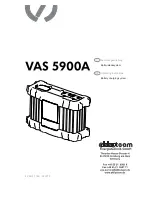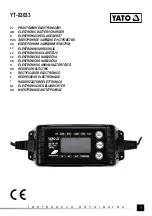
4
Red: Charging
Green: Charged
Red Flashing: Battery is too hot or too cold
Red/Green Flashing: Damaged or Faulty Battery
•
During charging, press the power button to display
the current charge on the fuel gauge.
•
USB A Port (for device charging) and DC out port
(for powering heated gear) is shut down when the
Micro-USB port is being used.
•
A fully discharged battery pack with an internal
temperature in the normal range will charge in about
130 to 525 minutes, depending on the battery pack.
•
Heavily cycled batteries may take longer to charge
completely.
•
After charging is complete, the continuous green
light will come on.
•
The charger will keep the battery pack fully charged
if it is left on the charger.
•
The Red Flashing Indicator light on the charger
indicates that the battery pack temperature is out-
side the charging range. Once the battery pack is
within the acceptable range, normal charging will
take place and the red light will be continuous. Hot
or cold batteries may take longer to charge.
•
the battery pack is fully seated into the bay. Remove
the battery pack and reinsert. If the light continues to
hot or cold, or wet. Allow the battery pack to cool down,
warm up, or dry out and then reinsert. If the problem
persists, contact a
MILWAUKEE
®
service facility.
•
If the light indicator does not come on, check that
the battery pack is fully seated into the bay. Remove
the battery pack and reinsert. If the light indicator
still does not come on, remove pack and unplug
charger for at least 2 minutes. After 2 minutes,
plug charger back in and insert pack. If after these
attempts the light indicator still does not come on,
contact a
MILWAUKEE
®
service facility.
Maintenance and Storage
Store your charger in a cool, dry place.
Unplug battery chargers and remove batteries when
not in use. Do not store battery packs in the M12™
Compact Charger and Power Source.
WARNING
To reduce the risk of injury, always
unplug the charger and remove the
battery from the charger before performing any
maintenance. Never disassemble the battery or
charger. Contact a
MILWAUKEE
® service facility
for ALL repairs.
To reduce the risk of injury and damage, never
immerse your battery or charger in liquid or allow
Cleaning
Clean out dust and debris from charger vents and
electrical contacts by blowing with compressed air.
Use only mild soap and a damp cloth to clean the
battery pack and charger, keeping away from all elec-
trical contacts. Certain cleaning agents and solvents
are harmful to plastics and other insulated parts.
Some of these include gasoline, turpentine, lacquer
thinner, paint thinner, chlorinated cleaning solvents,
ammonia and household detergents containing am-
around batteries, charger, or tools.
Repairs
The charger has no serviceable parts.
(battery only) or UN 3481 (batteries contained in or
packed with equipment).
WARNING
To reduce the risk of injury or ex-
plosion, never burn or incinerate a
battery pack even if it is damaged, dead or com-
pletely discharged. When burned, toxic fumes
and materials are created.
Disposing of
MILWAUKEE
®
Li-Ion
Battery Packs
MILWAUKEE
®
Li-Ion battery packs are more environ
-
mentally friendly than some other types of power tool
battery packs (e.g., nickel-cadmium). Always dispose
of your battery pack according to federal, state and
local regulations. Contact a recycling agency in your
area for recycling locations.
Even discharged battery packs contain some energy.
Before disposing, use electrical tape to cover the
terminals to prevent the battery pack from shorting,
MILWAUKEE
®
LI-ION
CHARGER
CHARGING THE BATTERY
WARNING
When to Charge the Battery Pack
with this
MILWAUKEE
®
Charger
Remove the battery pack from the tool for charging
when convenient for you and your job.
MILWAUKEE
®
batteries do not develop a "memory" when charged
after only a partial discharge. It is not necessary to run
down the battery pack before placing it on the charger.
•
Use the Fuel Gauge to determine when to charge
your
MILWAUKEE
®
Li-Ion battery pack.
•
You can "Top-Off" your battery pack's charge before
starting a big job or long day of use.
•
Charging the Battery Pack
1. Plug your USB A end of the cable into a power
source such as an AC wall adaptor, computer or
car port.
2. Insert the Micro-USB end of the cable into the
Micro-USB port in the charger.
3. Insert the battery pack into charger. The indicator
light will display the charging status:
The only time it is necessary to charge the
MILWAUKEE
®
Li-Ion battery pack is when the
battery pack has reached the end of its charge. To
signal the end of charge, power to the tool will drop
quickly, allowing you just enough power to finish
making a cut, drilling a hole, or driving a fastener.
Charge the battery pack as needed.
Charge only
MILWAUKEE
®
12V
Li-on batteries in
MILWAUKEE
®
12V Li-Ion Chargers. Other types of batteries
may cause personal injury and damage.


























